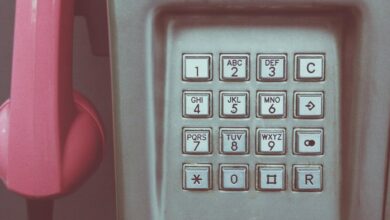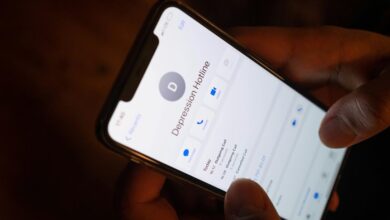Argos Call or Scam Alert? Check Now: 4167475246, 4167569406, 4167790381, 4168002760, 4168147135, 4168558116

Recent reports indicate that certain phone numbers, including 4167475246, 4167569406, and others, may be associated with potential scams. These numbers could be misused by scammers posing as legitimate businesses. It is crucial for individuals to assess the validity of such calls carefully. Understanding the tactics employed by fraudsters can significantly aid in distinguishing genuine inquiries from deceptive ones. What steps can one take to ensure their safety in such situations?
Understanding the Numbers: Are They Legitimate?
How can one discern the legitimacy of the numbers associated with Argos calls?
To ensure caller verification, individuals should cross-reference the numbers with official sources. Legitimate numbers typically originate from recognized channels and display consistent patterns.
Exercising caution, one should remain vigilant against potential scams that misuse similar digits to exploit unsuspecting recipients, thereby safeguarding personal freedom and ensuring informed communication choices.
Common Scenarios of Phone Scams
Phone scams often manifest through the impersonation of legitimate businesses, leading unsuspecting individuals to divulge personal information under false pretenses.
Another common tactic involves unsolicited prize notifications, which aim to create a sense of urgency and excitement, prompting hasty responses.
Recognizing these scenarios is crucial for safeguarding oneself against potential fraud.
Impersonation of Legitimate Businesses
Impersonation of legitimate businesses has become a prevalent tactic in the realm of phone scams, often leaving unsuspecting individuals vulnerable to deception.
Scammers exploit established business reputations to erode consumer trust, creating an illusion of legitimacy. This manipulation not only endangers personal information but also undermines the integrity of reputable companies, prompting a critical need for vigilance among consumers in safeguarding their interests.
Unsolicited Prize Notifications
Are individuals truly aware of the risks associated with unsolicited prize notifications? Often, these scams exploit notification tactics to create a false sense of excitement, masking their deceit. Assessing prize legitimacy is crucial for safeguarding personal information.
| Scenario | Emotional Impact | Response Needed |
|---|---|---|
| Winning a Trip | Joy turned to Panic | Verify source |
| Cash Prize Alert | Hope to Disappointment | Investigate closely |
| Gift Card Offer | Temptation to Fear | Avoid sharing info |
| Lottery Win | Elation to Regret | Confirm authenticity |
How to Identify a Legitimate Call From Argos
Determining the authenticity of a call claiming to be from Argos requires careful scrutiny of several key indicators.
Legitimate callers typically provide clear identification, specific details regarding purchases, and do not pressure individuals for personal information.
In contrast, scam characteristics include vague inquiries, urgency, and requests for sensitive data.
Awareness of these distinctions is crucial in safeguarding oneself against potential fraud.
Steps to Protect Yourself From Phone Scams
Recognizing the signs of a legitimate call is just the first step in combating the rising threat of phone scams.
Individuals must prioritize scam awareness by educating themselves on common tactics used by scammers.
Implementing strict phone safety measures, such as screening calls and avoiding sharing personal information, empowers individuals to safeguard their freedom against potential fraud, ensuring a more secure communication environment.
What to Do If You Receive a Suspicious Call
When an individual receives a suspicious call, it is crucial to first identify the caller to ascertain legitimacy.
Following this, reporting the number to relevant authorities can help prevent further scams.
Lastly, safeguarding personal information during such interactions is essential to avoid potential identity theft.
Identify the Caller
How can one differentiate between a legitimate call and a potential scam?
Employing caller identification techniques, such as checking the number against known databases, can be crucial.
Additionally, utilizing caller verification methods, including asking for details that a legitimate caller would provide, helps establish authenticity.
Vigilance and skepticism are vital; trust your instincts when something feels off during a conversation.
Report the Number
Reporting a suspicious call is a critical step in combating potential scams. Individuals should document the call details meticulously, including the number, date, and time. Following established reporting procedures enhances community awareness and aids in prevention. Below is a table summarizing essential reporting steps:
| Step | Action | Purpose |
|---|---|---|
| Document Call | Note details | Record evidence |
| Report to Authorities | Submit information | Initiate investigation |
| Share with Others | Inform friends or family | Raise awareness |
| Monitor Activity | Keep an eye on your accounts | Prevent further issues |
| Follow Up | Check on the report status | Ensure action is taken |
Protect Personal Information
Receiving a suspicious call can raise immediate concerns about personal security and privacy.
To protect data privacy, individuals should refrain from sharing any personal or financial information. Verifying the caller’s identity and reporting suspicious numbers is crucial to mitigating risks of identity theft.
Maintaining vigilance against potential scams is essential for safeguarding personal information and ensuring freedom from unauthorized access and exploitation.
Reporting Phone Scams: Your Role in Prevention
Awareness plays a crucial role in combating the pervasive threat of phone scams, which have become increasingly sophisticated and deceptive.
Individuals must actively engage in scam awareness by reporting suspicious calls, thereby contributing to collective prevention strategies. By informing authorities and sharing experiences, they empower others, fostering a community resilient against these frauds.
Each report enhances vigilance, promoting a safer communication landscape for all.
Conclusion
In a world where communication is as easy as pressing a button, discerning fact from fiction can feel like navigating a dense fog. Just as a lighthouse guides ships safely to shore, verifying the legitimacy of unfamiliar calls illuminates the path to safety. For instance, a recent survey revealed that over 60% of respondents had encountered phone scams, underscoring the need for vigilance. By staying informed and proactive, individuals can protect themselves from potential harm and steer clear of fraudulent pitfalls.




